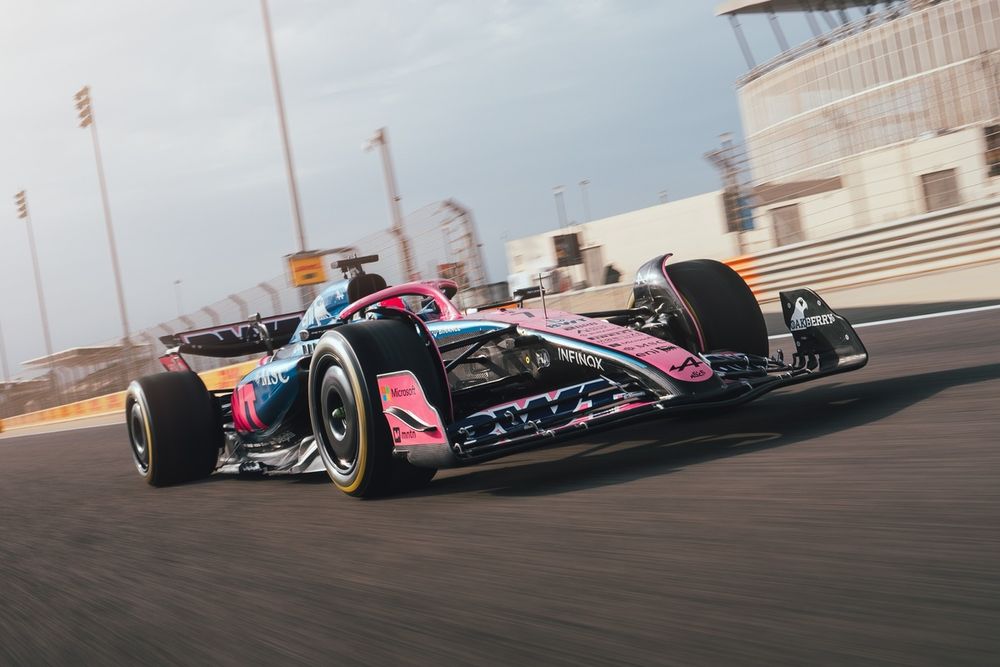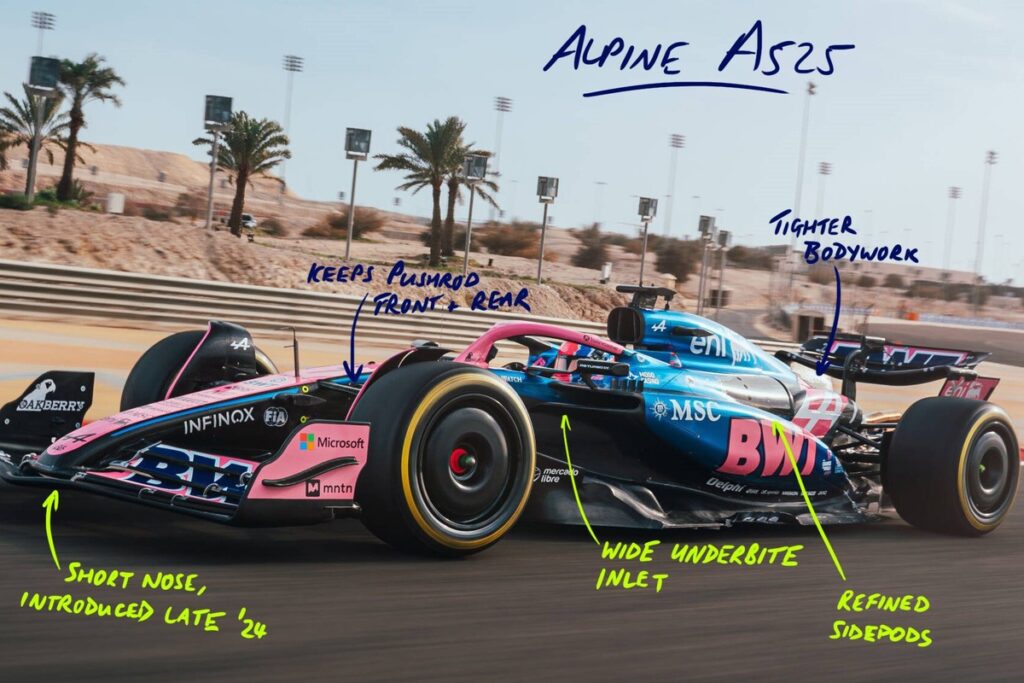Of all the development curves taken across 2024’s Formula 1 season, Alpine’s was arguably the steepest – and it needed to, given that its A524 was overweight, light on downforce and planted at the back of the field when the campaign started. That it finished the year sixth in the championship was helped by a colossal dose of good fortune in Brazil’s sopping wet grand prix, but the Enstone team’s development over 2024 helped it stay ahead of Haas and RB in the pecking order.
On the face of it, the A525 appears to be an evolutionary step of where the A524 left off, particularly in the late-season package that Pierre Gasly pressed into service so well to score a hatful of points in Qatar and Abu Dhabi. Those hallmarks are all here, with a modicum of refinement to rid some of the familiarity with the late-season package from 2024.
That’s visible at the front end, which appears to keep the key geometry of the late-season nose and front wing in place. The main evolution over the nose used across the majority of the season was in reducing the length of the crash structure, which allowed the wing’s mainplane to be free of the nose tip and thus the slot gap could be used to funnel air underneath the nose.
There’s been a variety of solutions here across the grid, but keeping that slot gap open can theoretically maintain the flow underneath energised, minimising the chance of any pockets of stalled, low-energy air that can be deleterious to the front-end balance. This is known as trimming the boundary layer; in layman’s terms, air flows over a surface and it forms a “skin” where the particles gain friction against the surface. As the friction causes the particles to slow down, this “skin” can get thicker, creating a pocket of circulating, turbulent air underneath it that can produce drag and reduce the effectiveness of the aerodynamics.
Of the teams revealed so far, Alpine also appears to be the only one sticking – so far – to the underbite inlet produced by placing the side impact structure lower down. This limits the exploitable undercut area, but also keeps the main aperture out of the line of fire from the suspension components in front. Like last year, this retains a P-shape as the inlet extends towards the chassis flanks.
Alpine’s sidepods appear to be going against a trend of the 2025 F1 cars
Photo by: Alpine
The elliptical sidepods are similar to those introduced last year, albeit with further refinements over the top surface. Alpine has not provided clear on-track shots of the car from above, thus making it difficult to determine the presence of a channel, but one can assume there is some degree of trenchwork towards the trailing end.
Push-rod suspension remains in place at both the front and the rear, and the suspension towards the back appears to benefit from some bodywork reshaping efforts to open out the useable space for airflow here. This is notable with the bulge around the Alpine’s “A” iconography at the back, as the cooling outlet was presumably moved upwards to tighten the rear end packaging. The avoidance of using a traditional shark fin is sustained here, as Alpine continues to use small rear-facing openings along the engine cover’s centreline.
It’s not too much surprise to see that the A525, in launch spec at least, is uncannily similar to its predecessor given the extensive development that went late into 2024. But will it develop further? Under the aegis of David Sanchez, Alpine’s advancements in the technical department bore some immediate fruit, and the new car should at least offer a base to move the game on through the year – at least, until the team decides that it wants to focus on its Mercedes-powered 2026 challenger.
The new car has its roots in a challenger that was very much leading the midfield by the end of 2024
Equally, does that similarity signal a lack of ambition? Or, perhaps, is this just a bit of cheeky misdirection – and that the A525 that rocks up in Australia will look completely different?
Either way, the new car has its roots in a challenger that was very much leading the midfield by the end of 2024 – and one that Gasly could hurl to new heights in qualifying before race pace limitations pegged it back. Perhaps there’s method to the blandness – and that designing a new car around its aero findings (rather than the other way around) will give the team a sensible platform to bounce from.
Subscribe to Autosport Plus for more Formula 1 technical and in-depth analysis ahead of the 2025 season.

The A525 will be the last of Alpine’s cars to be powered by Renault
Photo by: Alpine
In this article
Jake Boxall-Legge
Formula 1
Alpine
Be the first to know and subscribe for real-time news email updates on these topics
Subscribe to news alerts
Read the full article here

